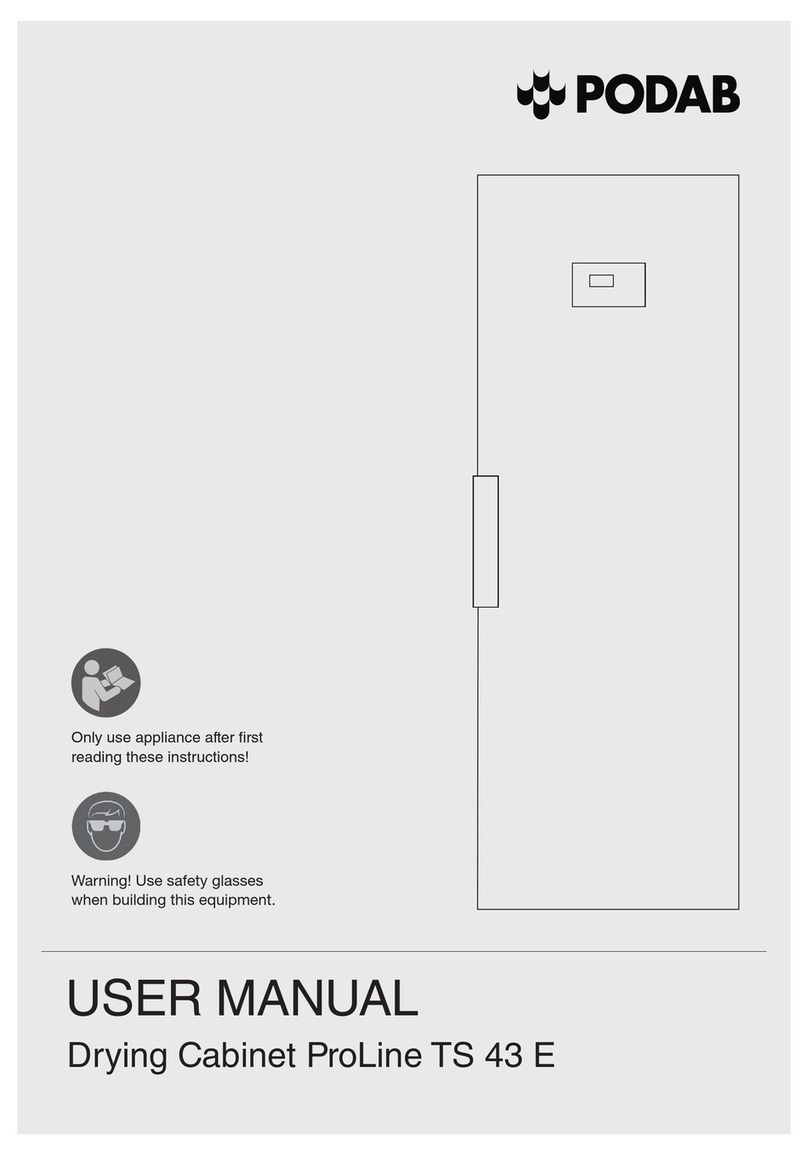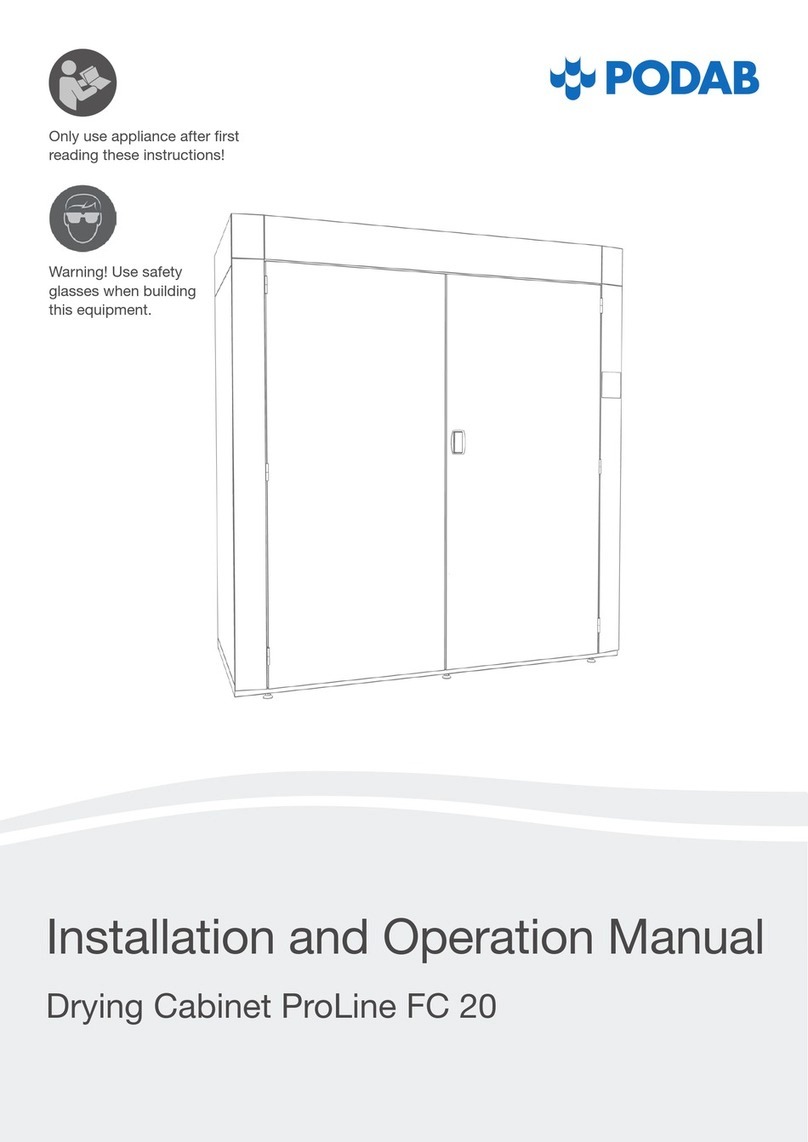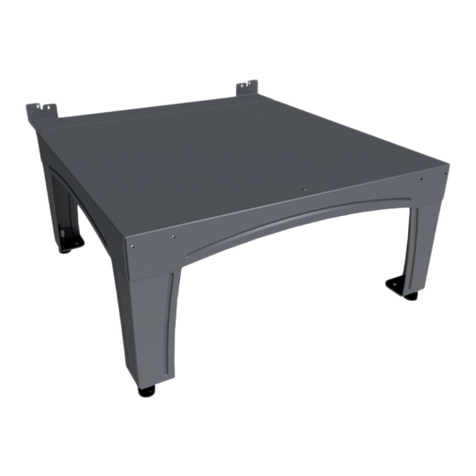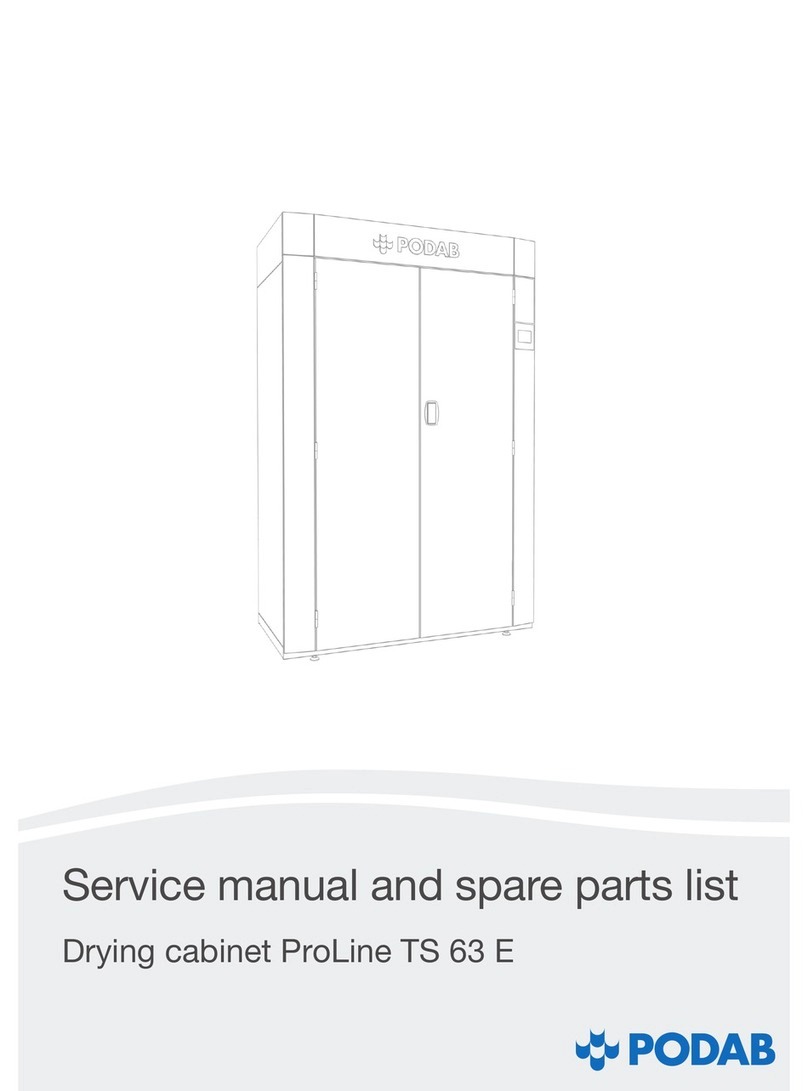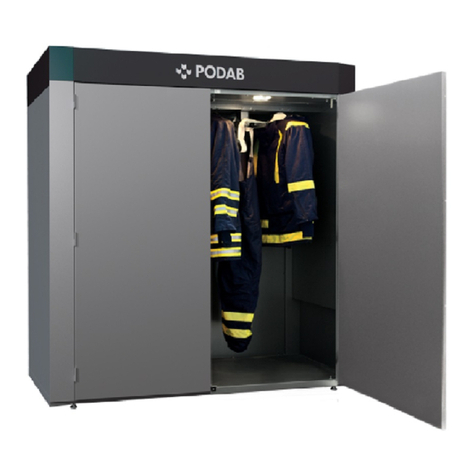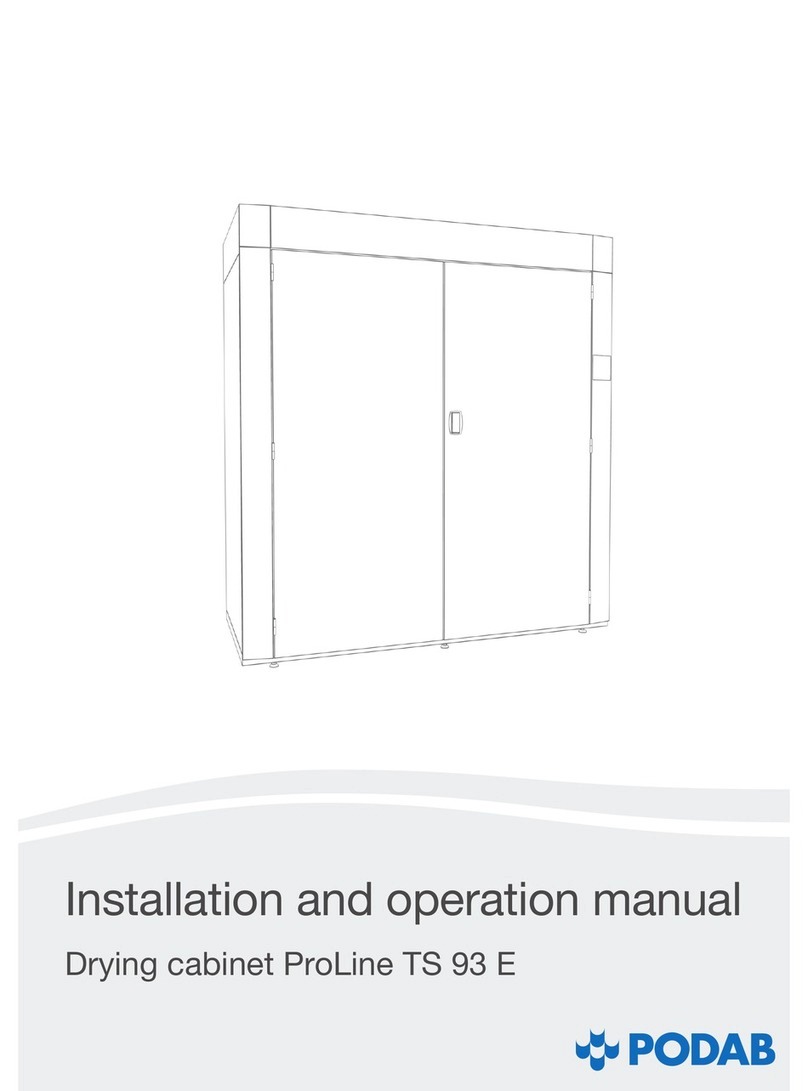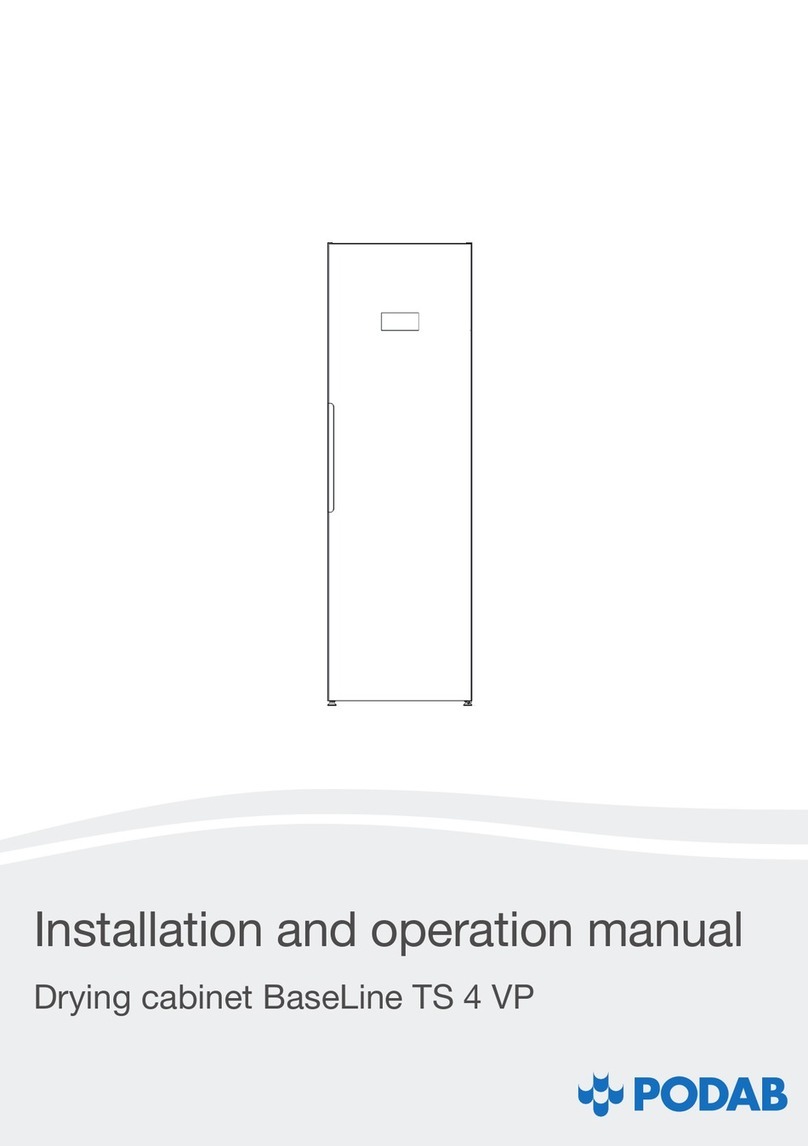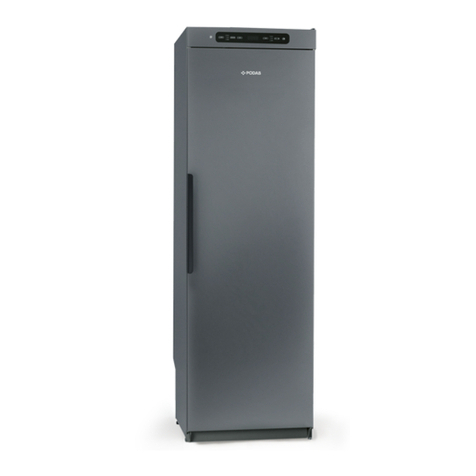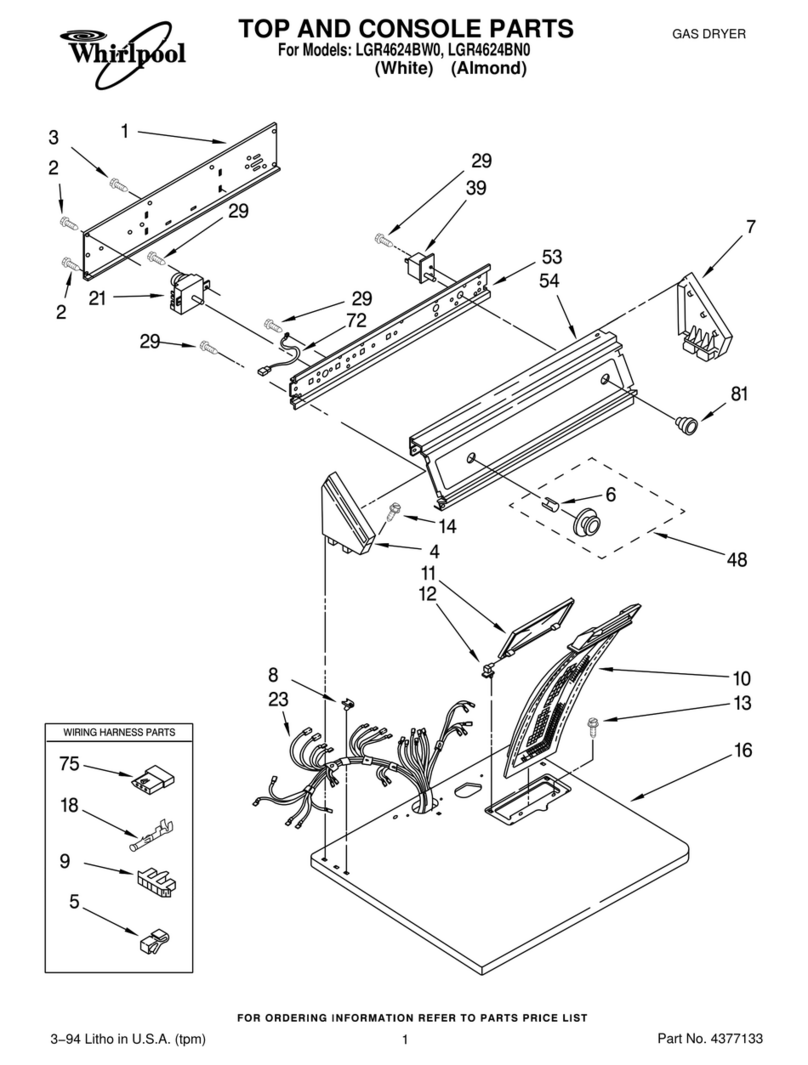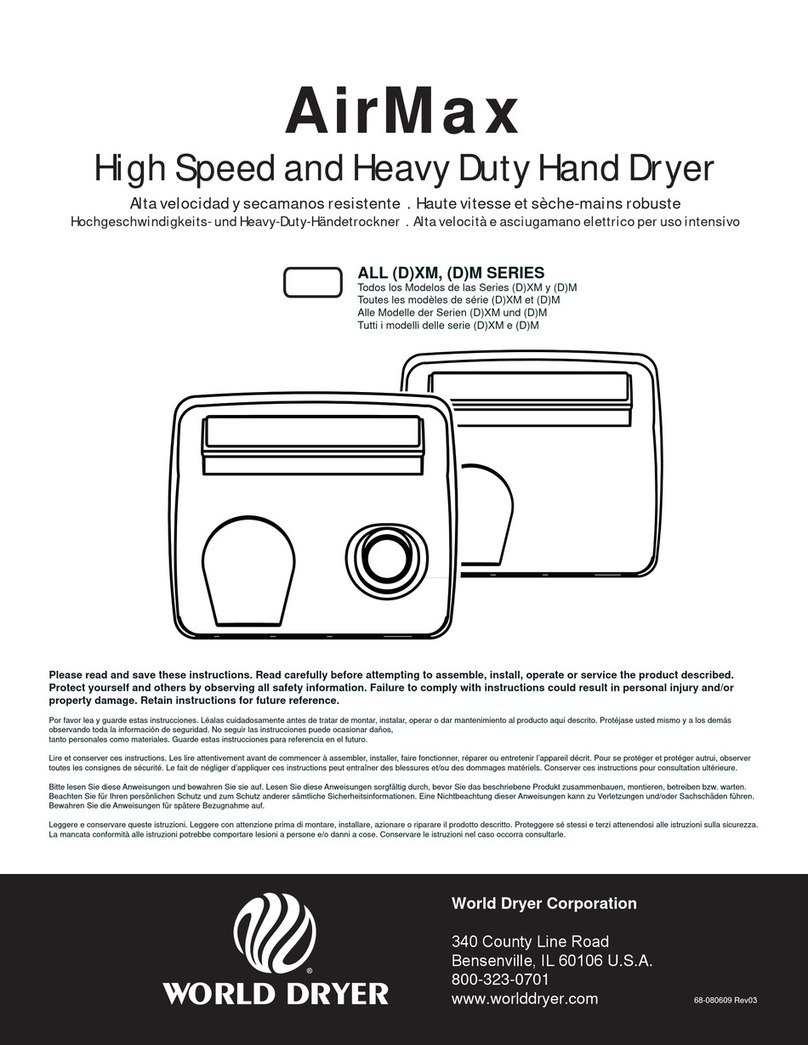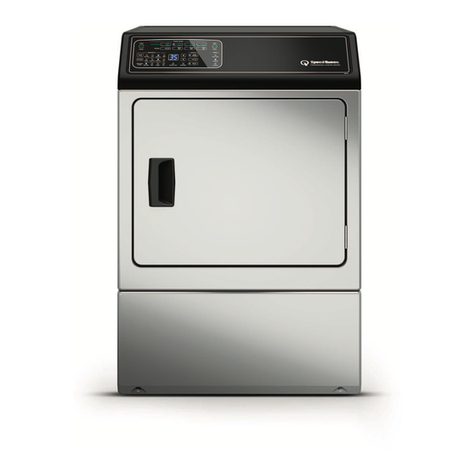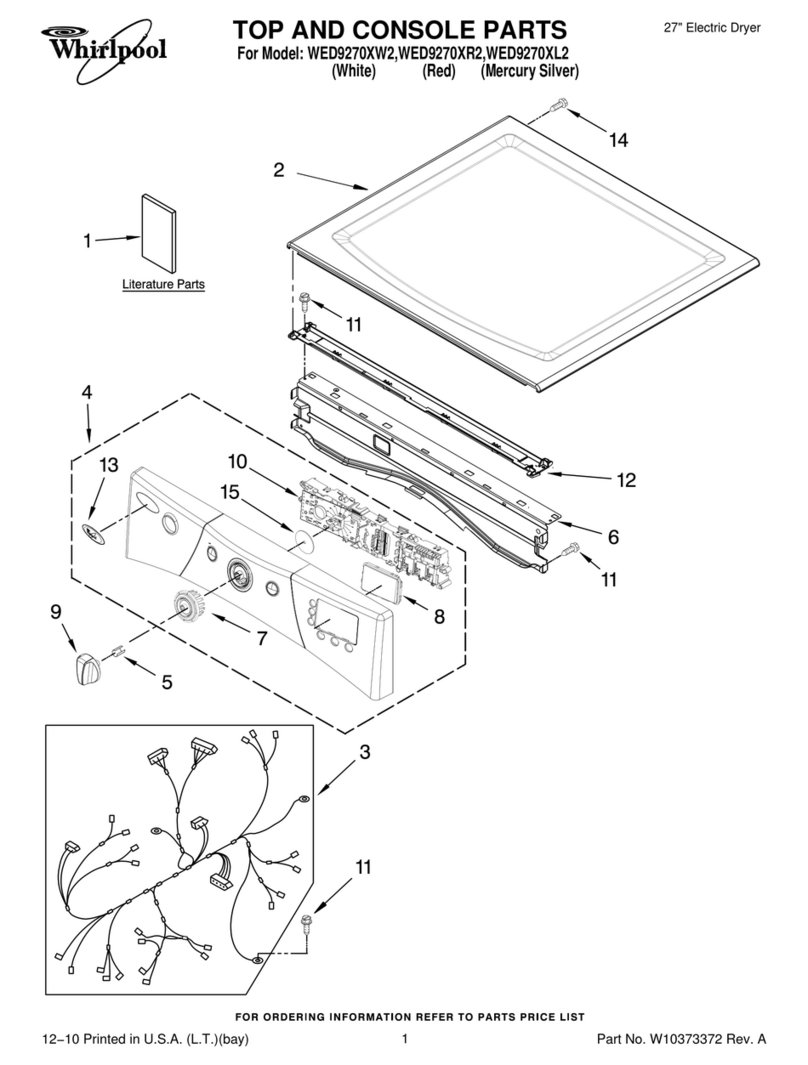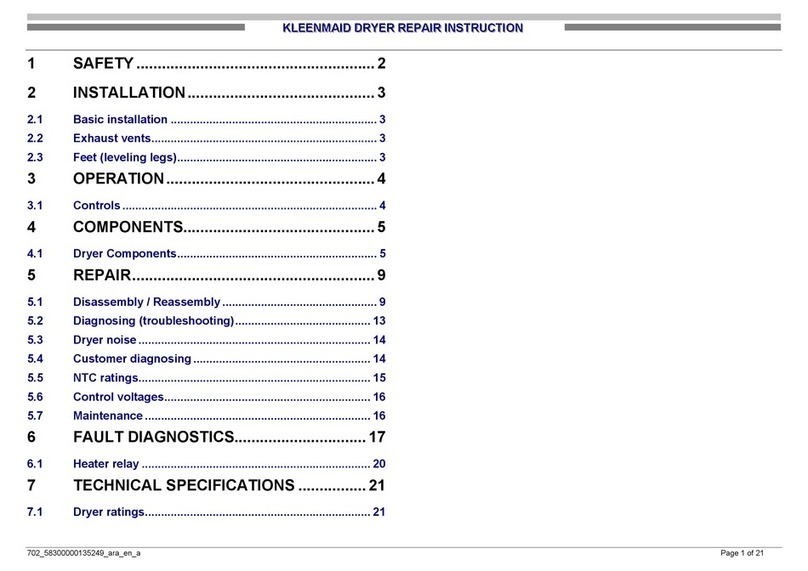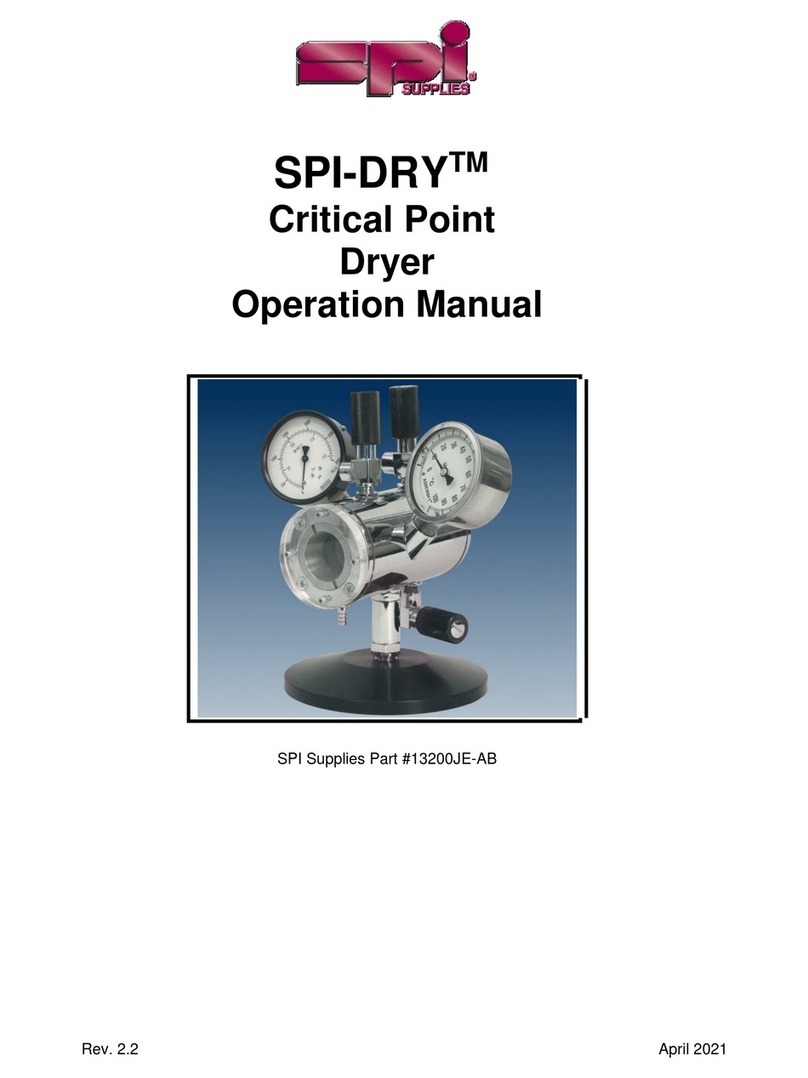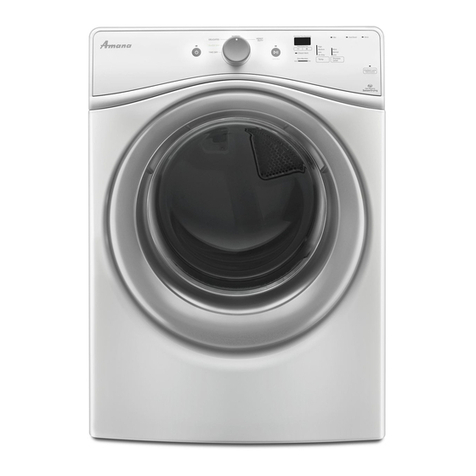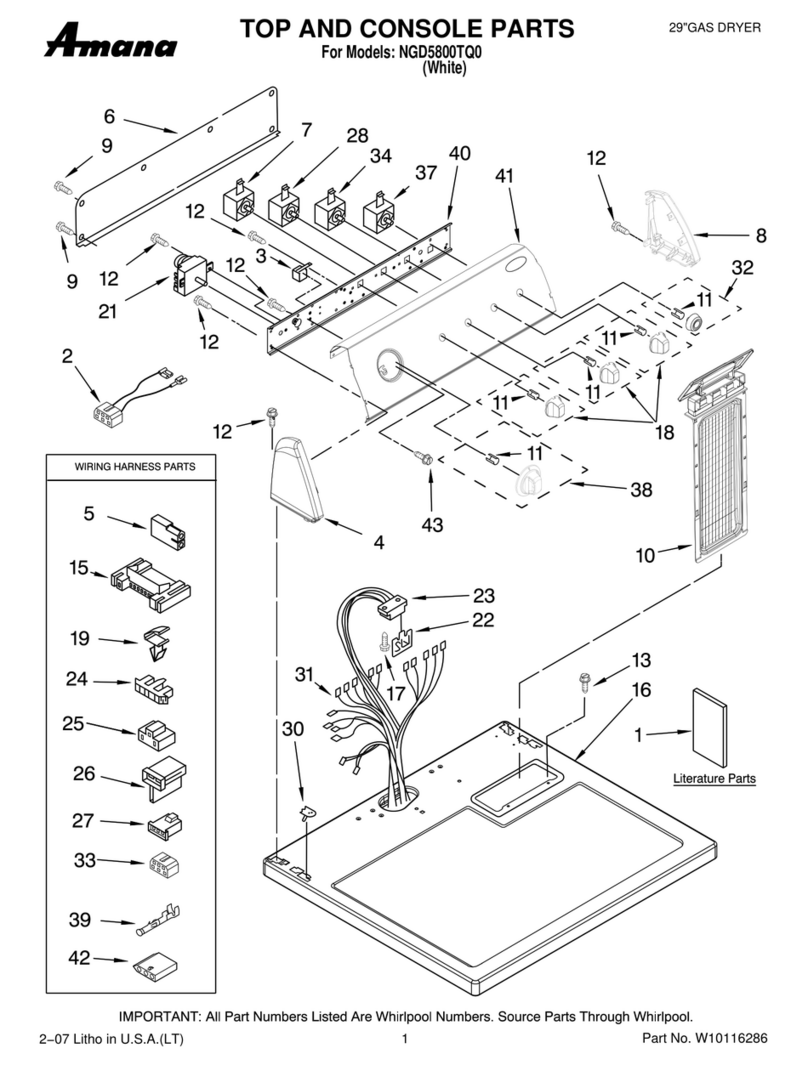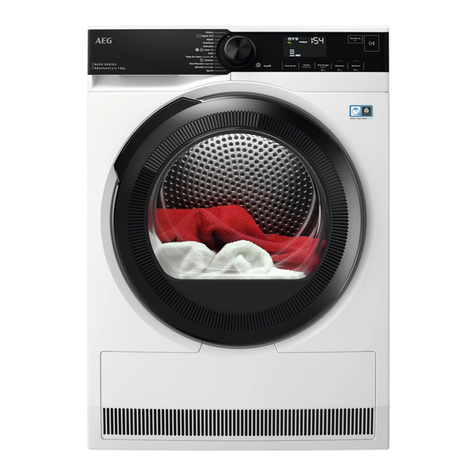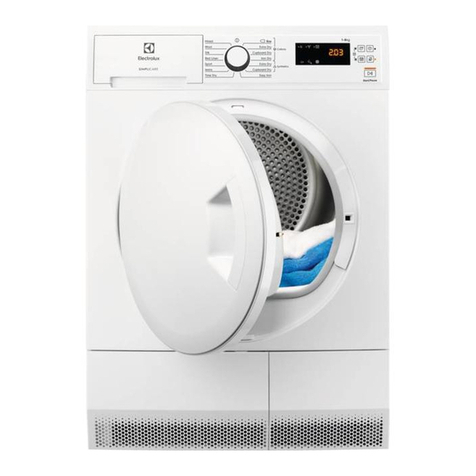Step 1: Put the tumble dryer in place
Remove the packaging. When installing the appliance, take note
of its dimensions and the space requirement for the connection
of an exhaust air duct. Also make sure that there is enough room
in front of the dryer for the door to be opened fully.
NOTE: We recommend that the machine is installed on a firm
and level floor.
Step 2: Installation without plinth
If the tumble dryer is to be installed directly on a conctrete floor
(or on a conctrete plinth) PODAB recommends the following
work flow:
• Place the dryer on the desired installation spot.
• Mark the holes for the fastening brackets (accessorie, article
number 210008). The fastening brackets should secure one
foot at the front and one at the back (diagonally placed). The
brackets prevent the machine from tipping.
• Drill and place drilling plugs in the holes.
• Place the dryer and align the appliance with the help of a
spirit level all sides. If necessary, correct the height of the
tumble dryer feet.
• Fasten the choosen feet with the brackets and tighten the
screws fixating the brackets to the floor.
For installation on an steel plinth follow the instructions includ-
ed with the plinth (accessorie, article number 101212).
Step 3: Connect the tumble dryer to the
ventilation channel
For further instructions, se page 7: Requirements for ventila-
tion.
• Do not use ventilation channels made of plastic or foil.
• Place the dryer so that the ventilation channel is as short as
possible.
• Make sure that the ventilation channel is cleaned when a new
dryer is installed.
• Use a 125 mm rigid or flexible metal duct to the evacuation
connection.
• If you use rigid ducts, it is important that the male connector
of the ventilation tube on each section follows the air direc-
tion.
• The construction shall be as straight as possible.
• Always isolate ducts that go through non-isolated areas. The
condensation leaves dust and dirt get stuck in the channel.
NOTE: If the dryer is not connected according to these rec-
ommendations, the warranty is no longer valid.
Installation guide
Step 4: Connect the tumble dryer to the
main switch
To prevent fire and electrical shock, the dryer MUST be con-
nected according to the color codes on the cables. Only an
authorized electrician is allowed to install the electrical connec-
tion. The dryer is prepared for one of the following electrical
connections depending on specification:
• 400 V, 3-N, 50 Hz (standard)
• 220 V, 3-N, 50 Hz
• 440 V, 3-N, 50 Hz
NOTE: Only an authorized electrician should carry out the
electrical connection.
Step 5: Control that the heating relay is
working
Shut the door and start the dryer, after about 3 seconds you
can hear the heating relay hit. Wait a couple of minutes and
control that the outgoing air channel becomes warm.
If the outgoing air channel does not get warm, go back to step
4 and control that the electrical connection is installed correctly.
WARNING
It is the customers responsibility to check that an authorized
electrician install the electrical connections.
To prevent personal injuries, the dryer shall always be con-
nected permanently through an all pole main switch. Always
ground the appliance. Also check that the connecting cable
has a strain relief bushing. If not, there is a risk that the dryer
will be live.

